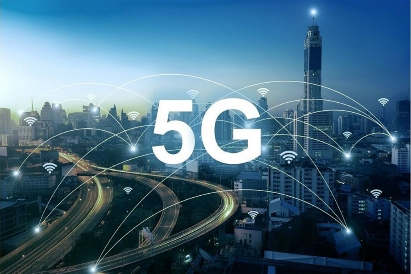
The advent of 5G technology has transformative potential for education and workforce training, enhancing how learning is delivered, accessed, and experienced.
Here are several key implications and opportunities that 5G provides for the education sector and workforce development:






### 1. **Enhanced Access to Education**
– **Remote Learning**: 5G’s high-speed connectivity enables seamless online learning experiences, reducing barriers to education, especially in rural or underserved areas where traditional broadband may be lacking.
– **Innovative Learning Methods**: Students can access high-quality, interactive educational content, including virtual labs, simulations, and documentaries, that require substantial bandwidth.
### 2. **Immersive Learning Experiences**
– **Augmented Reality (AR) and Virtual Reality (VR)**: 5G facilitates the use of AR and VR technologies in classrooms, allowing for immersive learning experiences such as virtual field trips or simulations that create engaging educational environments.
– **Gamification**: Enhanced connectivity allows for the development of educational games that provide interactive and engaging ways to learn complex subjects.
### 3. **Personalized Learning**
– **Adaptive Learning Technologies**: 5G can support real-time data analysis and feedback, enabling personalized learning experiences tailored to individual students’ needs, strengths, and weaknesses.
– **Learning Analytics**: Educators can gather and analyze data on student performance and engagement, making informed decisions to enhance curriculum and instructional strategies.
### 4. **Collaboration and Communication**
– **Real-Time Collaboration**: Enhanced connectivity allows students and educators to collaborate in real-time, regardless of location. This promotes teamwork and the sharing of ideas through virtual classrooms and collaborative platforms.
– **Global Learning Environments**: 5G can facilitate cross-border collaborations, allowing students to engage with peers from different cultures and backgrounds, enhancing global citizenship and intercultural awareness.
### 5. **Workforce Training and Upskilling**
– **On-Demand Training**: 5G can support flexible and on-demand workforce training programs, allowing workers to access educational resources and training materials anytime and anywhere.
– **Realistic Simulations**: Industries can use VR and AR for training simulations, providing workers with hands-on practice in a risk-free environment. This is particularly valuable in fields like healthcare, aviation, and manufacturing.
### 6. **Streamlined Administration and Management**
– **Data-Driven Decision Making**: Educational institutions can leverage 5G-enabled tools to manage operations more efficiently, including enrollment, scheduling, and resource allocation.
– **Integration of IoT Devices**: 5G connectivity allows for the use of Internet of Things (IoT) devices in classrooms, such as smart boards and connected learning tools, enhancing the educational environment.
### 7. **Continuous Learning and Reskilling**
– **Lifelong Learning**: 5G technology promotes a culture of lifelong learning, allowing professionals to continuously update their skills in response to changing job demands and technological advancements.
– **Micro-Credentials**: Online platforms can offer short courses and certifications that are easily accessible through 5G, enabling workers to gain new skills rapidly and efficiently.
### 8. **Increased Engagement and Retention**
– **Interactive Content Delivery**: The ability to deliver high-quality, interactive content can enhance student engagement and retention rates, catering to various learning styles.
– **Community and Networking**: Enhanced connectivity fosters the creation of online communities where students and professionals can network, share knowledge, and collaborate on projects.
### 9. **Challenges and Considerations**
– **Equity and Accessibility**: While 5G holds promise, disparities in access to technology could exacerbate existing inequalities in education. Addressing the digital divide will be critical to ensure that all students benefit equally from these advancements.
– **Cybersecurity and Privacy**: The increased connectivity of educational platforms and training programs also raises concerns about data security and privacy, necessitating robust safeguards to protect sensitive information.
### Conclusion
5G technology presents exciting opportunities for the education sector and workforce training, paving the way for more innovative, personalized, and accessible learning experiences. To fully realize these benefits, stakeholders inclusive of educators, policymakers, businesses, and technology developers will need to work collaboratively to address challenges like equity, access, and cybersecurity. As the landscape of education and workforce training continues to evolve with 5G, fostering a holistic approach that prioritizes inclusivity and responsible use of technology will be essential to maximize its positive impact.


Leave a Reply